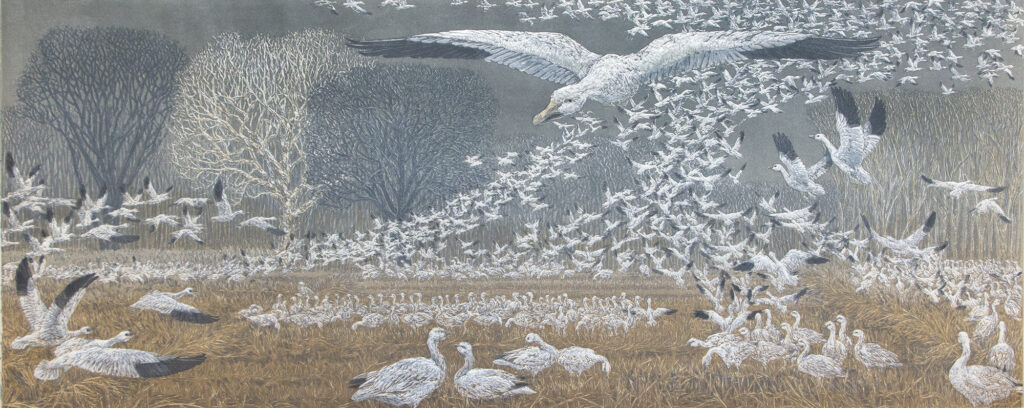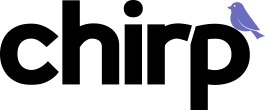From Ancient Egyptian cave markings to paintings in the world’s most prestigious museums, bird art has a long, storied history. Artists have depicted birds in sketches, illustrations, and paintings for over 40,000 years.
Early bird renderings had more to do with spirituality than ornithology. The Egyptians believed birds to be winged symbols of their gods. Later, Christians would link certain birds to the Christ, including them in their art as a nod to this symbolism. Native Americans believed birds to be a conduit between heaven and earth, using birds in many of their ancient, as well as modern, illustrations.
But many artists and naturalists have a less esoteric reason for drawing and painting birds. Their bird art leans more towards scientific observation. Through their art they record and study birds’ colors, markings, postures, and interactions to better understand them. In recent years, some artists have even used their craft to bring awareness to environmental concerns and bolster conservation efforts.
Birds’ portrayal in art depends on the eye of their beholder, be that a poet, historian, scientist, artist, or naturalist. There’s no shortage of bird art that celebrates their beauty, marvels at their intelligence, and helps us learn about them.
Some of Chirp’s Favorite Bird Artists
John James Audubon

No list of bird artists would be complete without John James Audubon. Celebrated throughout the 19th century for his descriptive bird paintings, Audubon is still considered one of America’s most prolific bird artists. His book The Birds of America catalogues 435 art prints depicting a wide range of North American birds. Audubon’s legacy inspired the National Audubon Society, an organization geared towards bird education and conservation in North America.
George Edwards

Eighteenth-century ornithologist and naturalist George Edwards grew to love birds and other wildlife from his European travels. Heralded as the “father of British ornithology,” Edwards formed a love for the wonders of nature at a young age. He began sketching what he saw—particularly the rare birds he spotted in his travels. His colorful bird sketches were all at once accurate to the subject and artful. His illustrations were published in the mid-1700s, in a series of four volumes titled A Natural History of Uncommon Birds.
Thomas Bewick


Bewick, a nature historian and woodworker born in 1753, became known for his detailed wood engravings. His woodcut prints depicted an assortment of birds in his native England. They are complete in detail, both visually and in notation. Bewick included each bird’s common name, as well as French and Latin variations, and his own observations. He also listed details like the bird’s size and a description of its bill, legs, feathers, and eye color.
Louis Agassiz Fuertes

Fuertes, inspired by fellow American ornithologist John Audubon, started sketching birds as a boy in the late 1800s. His colorful renderings caught the eye of the Smithsonian as early as 1890, when Fuertes was only seventeen. One of America’s most beloved bird artists, his work remains the standard in ornithological art to this day. But it’s more than lifelike. Fuertes’s art is said to capture the bird’s personality, making for an all-at-once precise and sensitive study of birds.
Janet Turner

Naturalist, art educator, environmental activist: Janet Turner was all three, and more. Born in Missouri in 1914, Turner has since passed, but her work lives on through her art and conservation efforts. She worked in several mediums throughout her career, from wood and linoleum blocks to screen printing. Turner was particularly interested in depicting natural bird scenes that had a deeper environmental message. Her work Wintering Snow Geese showed birds migrating—a warning about bird habitats being destroyed in the Sacramento Valley. Her work is experimental in form, drawing the viewer in with active scenes and textural details.
Roger Tory Peterson

Photo courtesy of the Roger Tori Peterson Institute
Of course we’re going to include celebrated naturalist and illustrator Roger Tory Peterson in this list! His bird guides alone (which are available online and at the Chirp store) are worth mention. But Peterson was more than just a guide illustrator: he was a naturalist, ornithologist, and educator. He was also an early inspiration for the modern-day environmental movement. And he gave us the first field guide of its kind: Guide to Birds, published in 1934. It was in this book that Peterson first outlined his bird identification system, which is still used today.
David Allen Sibley

Sibley is another well-known bird illustrator, and his Sibley Guides are known the world over by birding enthusiasts. An American ornithologist, Sibley is also considered one of our most comprehensive field guide authors and illustrators. Sibley taught himself how to draw and paint, and his field guides are considered “birding bibles” for today’s birdwatchers.
Meet Dr. Roger Lederer, Author of The Art of the Bird

Are you a bird lover, an avid reader, an art connoisseur—or maybe all three? Have we got a treat for you! Join us in the Chirp Backyard on August 13th. Guest speaker, Ornithologist Dr. Roger Lederer, will be discussing his acclaimed book, The Art of the Bird: The History of Ornithological Art through Forty Artists. Space is limited, so register for the event today.


